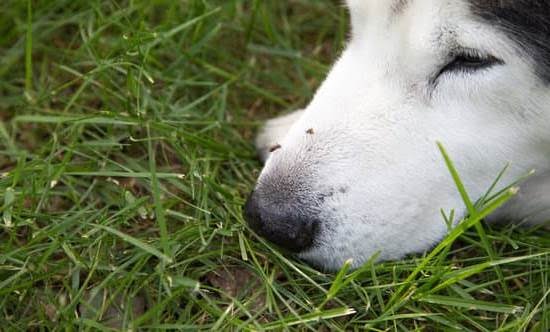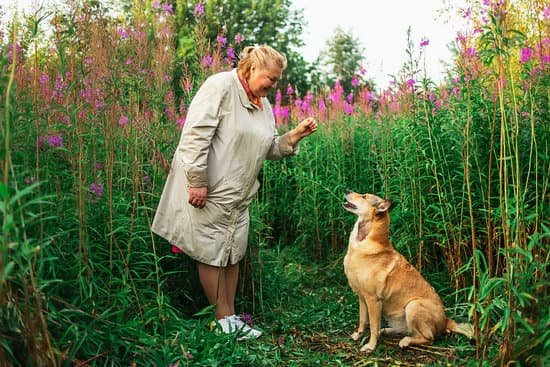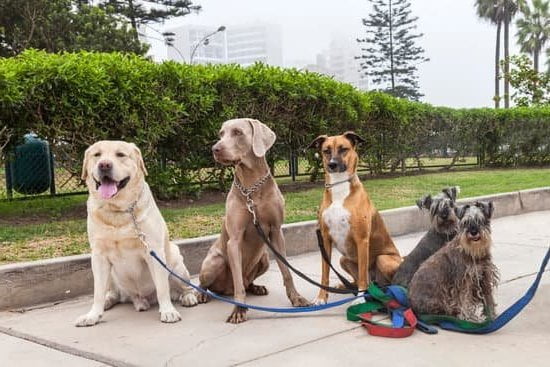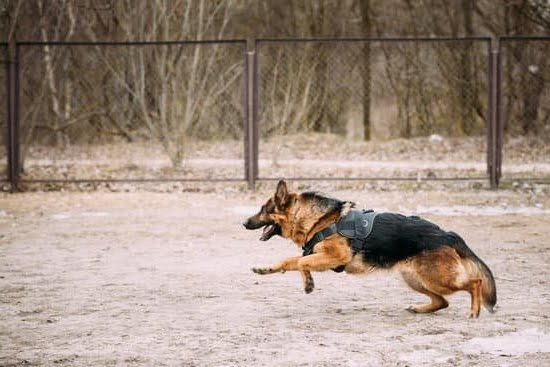Introduction
Leash-free dog walking has a variety of benefits for both the pup and its owner. One of the most important benefits is that it allows your pup to get out and explore. By letting your dog wander off-leash, they can discover new sights, smells, and sounds in their area. This type of exploration can do wonders for their mental stimulation, as they are able to become more familiar with their surroundings. Additionally, leash-free walking provides your pup with much needed physical exercise. Exercise not only keeps them healthy but also helps to reduce stress levels and improve general behavior. Last but not least, leash-free dog walking offers you a great opportunity to bond with your pet through playing fetch or having a little friendly competition during a game of tug-of-war. Not to mention it’s always nice to get some fresh air outside shared with your furry friend!
Setting a Foundation for Success
Training a dog to walk without a leash is an important skill and can provide many benefits, such as allowing your dog the kind of freedom they crave, while also providing them with improved socialization and exercise opportunities. To happily and safely accomplish this task, it’s essential that you set the groundwork for success. First, make sure your pet has basic obedience training down; without these skills in place all training professional recommend not attempting to train them for off-leash walking. In addition, keep an eye on their size: larger dogs will require further training as well as verification from a trainer before setting off unleashed. It’s also important to evaluate your training environment carefully: choose locations that lack distractions and other animals to reduce stress during the learning process. Once these steps are taken and you’re ready to start training, find rewards that motivate your pet (strong treats are effective) and be sure not to forget about verbal cues which can help reinforce positive behavior. Finally, it’s beneficial to introduce longer leashes gradually as part of the leash-free process in order ensure safety when first starting out.
Once foundation is laid out, you can begin approaching your dog walking training in earnest by beginning with short durations and specific goals each time you embark on a leash-free journey. During each session focus on staying close at hand using distraction countering and recall skills—start with situations where there are no changes of scenery or surroundings that might prove difficult for your pup since even the most typically obedient dogs can become overwhelmed when faced with new territory or unfamiliar settings. Additionally, it’s important for you remain consistent during each lesson’s duration–if someone else wants to take him/her ensure they understand the framework of the current lesson before setting out so they don’t undo any progress made. As practice continues and he/she demonstrates obedience don’t be hesitate to increase difficulty levels by letting them go further into open spaces with minimal supervision; rewards should also reflect stronger performances in order motivate better concentration and willingness during each session as progress occurs over time. With patience, dedication and consistent reinforcement techniques even the most reluctant learners can learn how to respond correctly even when confronted with distracting scenarios outside of common spaces where they have already shown obedience or control around others; increased confidence generally leads to more accurate response times in various settings when needed–this is why it’s integral that foundational basics taught initially remain solid throughout their transition from conditional reward systems into full trustworthiness off lead over time!
1 Establishing Trust and Respect
The foundation for successful leash free walking starts with trust and respect. Before attempting to let your pup walk off leash, make sure that you have established a strong bond where your dog trusts your commands, displays respect for your authority, and has been trained on basic obedience skills. Start by spending quality time exposing your pup to basic commands such as “sit”, “stay”, and “come” while they wear a collar and leash so they can become comfortable with being in the presence of humans. As you progress in training together, slowly transition to reward-based systems such as positive reinforcement and clicker training to accelerate the learning process. Working together and relying on rewards will help build trust which is essential before moving on to off-leash walking.
2 Establishing Boundaries
In order to train your dog to walk without a leash, it is important to establish boundaries and set expectations. Start with short walks on-leash in familiar locations, areas with minimal distractions such as parks or even your backyard. Gradually increase the distance and introduce more distractions as your pup gets better at walking alongside you. Increase their confidence by talking calmly, giving ample praise and treats when they stay close. Introduce the ‘come’ command for times when your pup drifts too far away from you or tries to wander off and quickly call them back before rewarding them. When out in public spaces, ensure that you’re near a fenced area so that your pup does not strayed too far and get lost. A long line leash should be used for extra reinforcement when needed. Keep training consistent and keep the walks enjoyable for maximum effect!
Preparing to Train
Before you start training your dog to walk without a leash, it’s important that they have the right mindset and behaviour to ensure their safety. To do this, practice basic commands such as ‘sit’ and ‘stay’ with them during regular walks. This will help them understand what is expected from them before you begin teaching them to walk without a leash. Additionally, it is important to establish a reward system for when your dog does what is asked of them. You may decide to give treats for positive behaviour or quality time together for good behaviour instead. Both options will be effective in helping your dog learn new habits and routines. When your chosen reward system is established, you are ready to begin setting out on leash-free walks!
Key Commands to Teach
Training a dog to walk without a leash can be done with patience and practice. First and foremost, the animal must be comfortable following basic verbal commands, so use plenty of treats as rewards for simple obedience exercises. Once these have been mastered, work on more complex commands such as ‘heel’, ‘come’, ‘stop’ and ‘no’. With each command, give your dog plenty of treats when they follow you correctly – this will reinforce that behaviour in their minds. When out on a walk, use verbal commands frequently to remind them of the rules. You can also break up long walks with breaks where you can play fetch or run around to help keep your pet’s focus on you even when off-leash. To carry reinforcement further, apply the six-foot leash technique; this involves shortening an existing leash to the size of your arm or six feet and then encouraging your pet to stay beside you or heel at all times while walking outdoors. With patience and lots of treats, your pup should eventually learn how to walk without a leash!
1 Command 1
To train your dog to come when you call them, start off inside your home with the leash off. Speak clearly and in a slightly higher voice than usual, saying “Come” as you extend your arm along with a waving motion. As soon as your dog steps in your direction, reward them with either a treat or verbal praise. Repeat this process as often as possible until they respond reliably.
If your dog is still having difficulty understanding, you can use a longer lead for extra security and guidance. When using the lead method, guide your pup towards you using the lead while simultaneously repeating the command “come”. Focus on rewarding positive actions and try not to scold or punish them for incorrect responses. If all else fails, contact a professional trainer or animal behaviorist who can help guide you through the proper techniques of training.
2 Command 2
Stay is a great command to practice before teaching a dog to walk without a leash. To teach your dog to stay, start in an area with no distractions. Have them sit or lay down and give the command “Stay.” Show your hand in front of their face and hold up three fingers, which communicates to them that they should remain in the same spot for three seconds. After those three seconds, say “Yes!” and offer praise and treats so your pup associates staying with positive reinforcement. Repeat this process until your dog can stay for 10 seconds without being reminded of the command. Once you get close to 10 second successful stays, start introducing more and more distractions until you’re able to leave them off-leash with minimal risk of running away from you.
3 Command 3
Once your dog has successfully mastered the two commands, it’s time to start teaching them the “go” command. You should start with a long distance between you and your pup, as far as they will comfortably allow. Take a few steps in the same direction and give the command “go.” Your pup should follow, walking alongside you while still staying close. When they reach you, reward them with lots of praise and a treat. Keep repeating this until they understand that “go” means to follow you without being on the leash. Increase the distances each time, so your pup learns to stay close even when there are distractions around.
Introducing Your Dog to Their New Leash-Free Adventure
Before introducing your dog to their first leash-free adventure, there are a few important steps to take. Firstly, you should familiarize them with the idea of an off-leash walk. Find an enclosed space, like a yard or garden, and get them comfortable walking off the leash in that space. Allowing them to explore freely will help them become comfortable being on their own terms, and give you an opportunity to practice giving basic commands, like “sit” and “come.” With this approach, you will be able to see how your pup responds to different commands and commands in various environments. You can also practice recalling them by running away from them or calling their name—however, make sure you keep safety a priority at all times!
Once your pup is comfortable following basic commands in the secure environment you can begin integrating longer walks in larger spaces. Since it will be unfamiliar environment for your pup, it is best to have longer walks at first that gradually become more challenging. Start with just walking in an open space next to a road or field and get your pup used running alongside of you while they’re off-leash. As they become more comfortable with being around other people, animals or vehicles start taking short hikes around nature trails or lightly trafficked parks. Gradually increase the duration and distance of these walks as your pup gains confidence and trust in themselves and you as their caregiver. Keep rewarding them for good behavior as this helps promote positive reinforcement for desired behavior. Finally, arm yourself with treats so if they ever start getting too far away or not obeying commands calling out their name paired with treats can quickly get their attentiom back on track!
Enforcing Positive Behavior with Positive Reinforcement
The most effective way to train a dog to walk without a leash is through positive reinforcement. Positive reinforcement means offering rewards, such as treats or praise, to reward your dog for the desired behavior. The key is to accompany the reward with strong verbal reiteration of the command reinforcing the behavior you are looking for. For example, when your dog is walking with you off leash and not pulling on the leash, say “Good Boy!” in an enthusiastic tone and give him a treat. This rewards him for walking properly and positively reinforces the desired behavior. Additionally, start by allowing your dog off-leash for short spurts at first. Gradually increase their time off-leash as they learn to trust and obey you one step at a time. As your pet learns to always stay close and responds quickly to commands, try out new areas where there are more distractions or difficult terrain like stairs or mud puddles – this will challenge them and build up their obedience even more. To ensure success, it is important that you remain consistent when working with your pet, so keep practicing each day until they become comfortable enough walking without a leash in any environment.
Training Tips & Techniques
The best way to train your dog to walk without a leash is by taking the time to build trust and establish leadership. Begin by introducing a long line, which is basically an extension of a leash, anything from 10-30 feet long. This will give the pup room to explore and indulge their curiosity without them running off too far from you. You can start out in your backyard or somewhere else with no distractions. Then it’s important to focus on teaching the basic commands; sit, stay, come. This builds a foundation for mutual respect between you and your pup and creates trust so that they know you’re in control and that they still need to listen even if there isn’t a leash present. Once these commands have been effectively taught with the use of rewards, begin walking with just the long line with commands like “heel” or “this way” so let them know which direction you want them to go. Redirecting their focus away from distractions is key here as well as issuing positive rewards for any compliant behavior like walking at heel beside you or stopping when commanded. When mastering this outdoors also using mental challenges can be rewarding for both parties instead of tugging on their lead which can be counterintuitive so try using tricks like fetch, hide and seek or playing sled dog! Finally never let your pup walk ahead of you as this shows them that they are in charge, instead keep him slightly behind you giving takes precedence over any other activity going on around them such as another dog barking etc…
Troubleshooting the Most Common Challenges
When training a dog to walk without a leash, it’s important that pet owners take the proper steps to ensure success. Before actually beginning the task of teaching their dog how to walk without a leash, they must first accustom their pet to wearing and responding to a collar and leash. This will make it easier for them to control the pup if they need to while they are in the process of teaching it how to be independent. Additionally, it is crucial that pet owners do not attempt this type of training in an area where there is potential for distractions or dangers such as other dogs, people, or passing vehicles. Starting off in an enclosed area will help keep the environment stress-free for both owner and pet.
To get started with leash-less walking, pet owners should begin by allowing their pup some time off its leash in an enclosed space just so it can explore on its own and get used to having freedom of movement. If done every day, this will help build trust between owner and dog as well as reinforce good behavior with positive reinforcement. As the pup starts getting more comfortable with its independence, owners may start letting it roam farther from themselves but still within a contained area (like a backyard). This distance can then be gradually increased until both pet and parent become comfortable enough with their arrangement that they can venture out into public places sans leash. Of course, an additional factor is making sure that the pup has been trained well on basic commands like ‘come’ and ‘stop’ so that pet parents can maintain some semblance of control over them.
Although teaching your pup how to walk without leash takes patience and dedication on behalf of the owner(s), it can ultimately pay off in many ways since more freedom means higher social interaction levels which keeps pups healthy and happy!
Conclusion
Training your dog to walk without a leash is a rewarding experience for both you and your pup. Once trained, it will be much easier for both of you to enjoy the outdoors without worrying about losing or tangling a leash. With practice and patience, your pup will learn the boundaries of where he can roam without getting lost or causing harm to people or other animals. The large open space that leash-free walks allow can be therapeutic for dogs, providing an opportunity to satisfy their craving for exploration and physical exercise in an off-leash setting, which may lead to better behavior both on the leash and at home. While this training takes time and commitment, the end result is a safer environment for all parties involved – canine and human alike. So go ahead – better yet, go outside! Take the leap with your pup, trust his training, reap the rewards of leash-free walking, and let the adventure begin!

Welcome to the blog! I am a professional dog trainer and have been working with dogs for many years. In this blog, I will be discussing various topics related to dog training, including tips, tricks, and advice. I hope you find this information helpful and informative. Thanks for reading!





